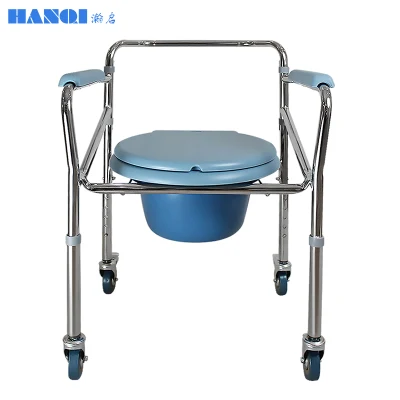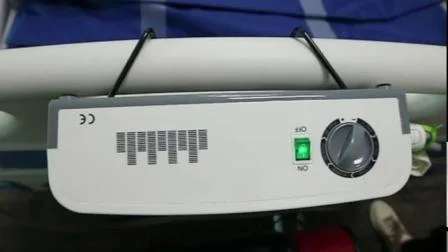MHRA reinforces anaphylaxis emergency guidance as hospital admissions rise
The Medicines and Healthcare products Regulatory Agency (MHRA) has reinforced its safety guidance on the steps to take in anaphylaxis, after new figures obtained by the MHRA show more than 25,000 admissions to English hospitals for allergies and anaphylaxis in 2022-23, more than doubling in the last twenty years.
The MHRA recently issued new guidance on how to recognise and respond to the signs of anaphylaxis, including the use of adrenaline auto-injectors (Epi-Pen and Jext products) which are prescribed to people at risk of anaphylaxis. The steps taken immediately in response to anaphylaxis can be the difference between life and death.
This comes as the most recent NHS figures show nearly 26,000 admissions in 2022-23 (25,721 admissions), more than double the 12,361 admissions in 2002-03 (a 108% increase).
For food-related anaphylaxis and other adverse reactions, the rise is even higher, going from just under 2,000 admissions twenty years ago (1,971 admissions) to over 5,000 last year (5,013 admissions, a 154% increase).
Anaphylaxis can be fatal and can develop suddenly at any age. These figures reflect the most serious allergy and anaphylaxis cases as they require patients to be fully admitted to hospital for further treatment/monitoring following a clinical assessment, rather than treated solely in an outpatient or emergency care setting.
People at risk of anaphylaxis should always carry two auto-injectors, regularly check they haven’t expired and ensure they know how to use the brand prescribed to them.
By knowing how to prepare for and what to do in an emergency, for yourself or someone else, it is hoped that people with allergies will survive anaphylaxis with less serious consequences and reduce hospitalisations.
These figures highlight just how serious the consequences of allergies can be, and the rising numbers of hospitalisations highlights the need to know how to act in an emergency.
Knowing how to use an adrenaline auto-injector and what to do afterwards is crucial when responding in an emergency, whether you’re having the reaction yourself or helping someone else.
Anaphylaxis is scary for everyone involved and when it strikes, it’s not easy to remember what the right steps are. That’s why we want to encourage everyone to download our guidance now so they can be confident they’re doing the right thing if they’re ever in that situation.
I have been one of those people lying in a hospital bed after a severe allergic reaction and I know how terrifying it can be.
These figures show that allergies are becoming more and more common, so it is vital that you know what to do if someone has a severe allergic reaction, even if you don’t have an allergy. It is all our responsibility.
I want to encourage everyone to read the latest guidance and keep it with you, at work, out for dinner, on holiday, so that you are always prepared. It could save your life or someone else’s.
If you have any signs of anaphylaxis, use your AAI immediately.
Guidance: Adrenaline Auto-Injectors (AAIs)
Follow us on Twitter: @MHRAgovuk
Follow us on LinkedIn: Medicines and Healthcare products Regulatory Agency
These figures were obtained on request from NHS England, showing the number of admissions to hospitals in England with a primary diagnosis of allergy or anaphylaxis, in 2002-03 and 2022-23 (provisional figures, subject to change). For a full list of ICD-10 codes used for allergy and anaphylaxis, please see the original data.
The Medicines and Healthcare products Regulatory Agency (MHRA) is responsible for regulating all medicines and medical devices in the UK by ensuring they work and are acceptably safe. All our work is underpinned by robust and fact-based judgements to ensure that the benefits justify any risks.
The MHRA is an executive agency of the Department of Health and Social Care.
For media enquiries, please contact the [email protected].
Sharing will open the page in a new tab
You may also like
![Shopping Aluminium Alloy Manual Transport Wheelchair Rollator Supplier]()
Shopping Aluminium Alloy Manual Transport Wheelchair Rollator Supplier
Shopping Aluminium alloy manual transport wheelchair rollator supplier For more details, welcome to send us inquiry To our valuable customer: 1) Tell us your idea and we will develop the new products
![Toilet Chair with Wheels Pull out Commode for Patient]()
Toilet Chair with Wheels Pull out Commode for Patient
Overview Product Description HQ613 lightweight easy for storage and transportation with commode bucket Anti-slip adjustable folding foldable toilet with wheel Commode chair Commode Detailed Photos
![Physical Therapy Anti Decubitus Medical Bedsore Mattress with Air Pump]()
Physical Therapy Anti Decubitus Medical Bedsore Mattress with Air Pump
welcome visit us in following trade show:Arab health , Dubai , UAE Jan 30- Feb 2,2023, Booth :R.E38High Quality Anti-Decubitus Air Pressured Medical Bedsore Mattress with Quiet Air Pump High quality
![Factory Price Personalized Customized Practical Foldable Chair Cane in Stock]()
Factory Price Personalized Customized Practical Foldable Chair Cane in Stock
Overview Factory Price Personalized Customized Practical Foldable Chair Cane in Stock Product DescriptionSpecification:1.7/8" aluminum tubing with offset handle,2.Sponge hand grip,3.Height adjustable





